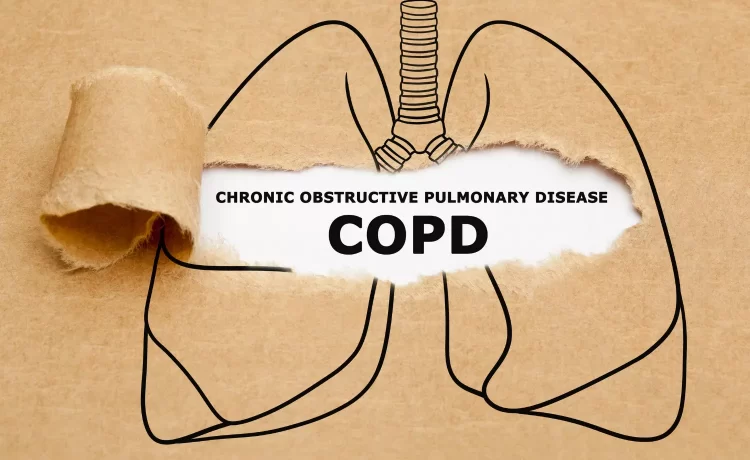Breathlessness is certainly a symptom that not anyone wants to experience. If you have experienced breathlessness in the past or are still experiencing it, you may have understood how terrible it could be and if it starts to affect your daily life, you are certainly not alone. In fact, millions of people around the world are affected by breathlessness. Breathlessness is commonly associated with respiratory disease or heart diseases. You may be surprised to know that many breathless symptoms often occur as a result of psychological factors such as from stress and anxiety. This makes breathlessness a symptom that may be caused by many causes and exist in many conditions or ranges in severity. One of the common medications used to treat breathlessness is SERETIDE 50 inhaler.
One of the diseases commonly associated with breathlessness symptoms are chronic obstructive pulmonary diseases (COPD). COPD is a group of lung diseases that makes it difficult to breathe and often gets worse as time goes by. What happens in COPD is best understood when you understand the normal process of breathing. In a normal healthy person, the airways and air sacs in lungs expands when a person breathes. The airways and air sacs are able to expand thanks to the elastic and stretchy properties. You can say that air sacs are like small balloons in the lungs. As a person breathes out, the air sacs deflate. Thus, when a person has COPD, there is less movement of the air coming in and out of the lungs. This is because in COPD, the airways and air sacs become less elastic and many of the structures are destroyed due to inflammation.
It is estimated that more than 200 million people have COPD and 3.2 million people die from this disease. COPD is the third-leading cause of death worldwide. There are 2 types of COPD which are emphysema and chronic bronchitis. Emphysema is characterised by inelastic air sacs whereas chronic bronchitis is characterised by the constant inflammation of the airway lining. Most people have COPD with both types but the severity of the disease differs greatly to one person and another.
The main cause of COPD is usually long-term exposure to lung irritants. Common irritants include tobacco smoke and air pollution or chemical fumes in the environment. In rare cases, genetic conditions such as alpha-1 antitrypsin deficiency can be the cause for COPD especially at young age. Even though COPD is often referred to as “smoker’s disease” due to the fact that 9 out of 10 people with COPD are caused by smoking and being the main risk factors, people who never smoke may also develop COPD when they have risk factors. Risk factors include exposure to second-hand smoke, history of asthma, history of respiratory infection in childhood, underdeveloped lungs such as babies with poor growth during pregnancy or premature baby and those aged 40 or above as the lung function declines due to ageing. People living in poverty and people living in rural areas are more likely to develop COPD.
Common symptoms of COPD are frequent coughing that produces a lot of mucus/phlegm, whistling or squeaky breathing sounds, difficulty breathing, chronic cough and fatigue. In the severe case of COPD, it may lead to chest tightness, weight loss and swelling in ankles, feet or legs. People with COPD have higher risk for other heart problems, mainly respiratory infections. Common symptoms of COPD develop from mid-life and as it progresses, it will lead to a person facing difficulty or unable to perform their daily life routine due to the breathlessness. COPD should be suspected if a person presented with typical symptoms and diagnosis is confirmed by a special breathing test known as spirometry.
There is no cure for COPD as there are no treatments that can retain the original healthy lung function. Even so, treatments are available to help alleviate symptoms. Treatments include using inhalers, tablets such as steroid or antibiotic and pulmonary rehabilitation. In severe cases, surgery or lung transplant may be considered but it is quite rare. Oxygen therapy may be given especially in severe COPD and with low levels of oxygen in blood. The best way to cope with COPD is to stop smoking for those who smoke and those who are often exposed to irritants, to avoid that. Since vaping is now also associated with the likelihood of developing COPD, it is best for patients to stop using vape or be around those who vapes.
Apart from medication and taking preventative measures such as not smoking and/or vaping, patients may want to consider getting vaccines that can help reduce the risk for lung infections such as vaccines against flu, pneumonia and COVID-19. Patients should also need to stay physically active and ensure activities they are doing do not cause worsening symptoms. It is necessary to get regular exercise as it can help to improve lung functions and makes it easier to breathe.







